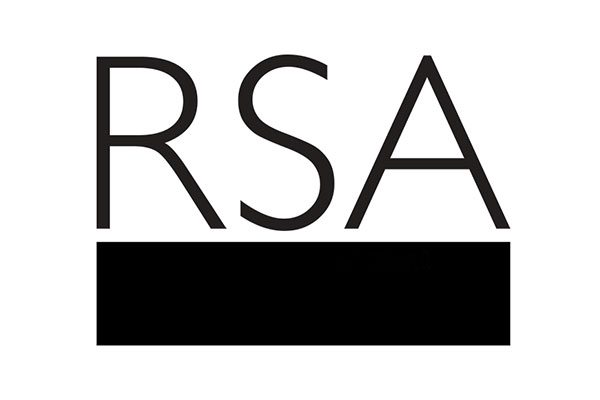At a certain point, in his remarkable speech to commemorate the fiftieth anniversary of the violent oppression of peaceful civil rights marchers at the Edmund Pettus Bridge in Selma, Alabama, Barack Obama remarked: “That's what America is. Not stock photos or airbrushed history or feeble attempts to define some of us as more American as others. We respect the past, but we don't pine for it. We don't fear the future; we grab for it. America is not some fragile thing; we are large, in the words of Whitman, containing multitudes. We are boisterous and diverse and full of energy, perpetually young in spirit.”
Given America’s tortured racial history, it is of little wonder that it wishes to turn to the future rather than the past. Britain’s fissures are more hidden and less historically dramatic. Our past is more reassuring – or at least better glossed over. Thomas Cromwell has become a figure of reserve, equanimity, and even-handedness as a result of (the excellent but fictional) Wolf Hall. He was something quite different. We sanitise effectively.
So it is that a new conservativism has arisen in both our main political parties. In the Conservative party, it is termed Red Toryism and, in Labour, it is termed, Blue Labour. They have the same philosophical and theological core: Catholic social thought with its emphasis on reciprocity, responsibility and solidarity and an analysis of the failures of social liberalism of the 1960s and then the economic liberalism of the 1980s and onwards. They share a romantic view of history and see a number of mistaken turning points- falls from grace if you like. Society has sundered and must be restored around a common good.
Up until now, the thinking around Blue Labour, in particular, has been difficult to grasp. Now, Ian Geary and Adrian Pabst, have gathered a collection of essays by leading thinkers in the Blue Labour camp. There is some marvellous writing in the volume not least by its lead protagonist, Maurice Glasman, who is gifted with the capacity for exhilarating prose. Romantic political economy has its own poetry.
What quickly emerges between the writers though is a series of tensions which aren’t really acknowledged. Where they are acknowledged, they are simply dismissed as ‘paradoxes’. However, there is an emerging schism in Blue Labour which, when push comes to shove, could split it in two. There is Blue Labour Mark I and Blue Labour Mark II.
Blue Labour Mark I is civic Blue Labour. This is where you find community organising, civic institution-building, a renewed focus on democratic governance, localism, long-term finance and commitment, and support for vocation and meaningful work. Some of these things you might find in the trade union movement and they are certainly found in social enterprise and co-operatism. It can be clunky such as in the proposal to share governance of public institutions three ways between workers, users and funders.
Republican (small ‘r’) thinking is similarly concerned as are strands of green thinking and metro activism, especially in the United States. It is a thoroughly good thing. This is not a space owned by Blue Labour but it is one in which it has actively participated – to its credit. Obama’s movement for change was built on this infrastructure. It was Obama ’08 that elevated community organising in the UK from a set of successful local endeavours such as London Citizens and its living wage campaigns to a broader political approach. There is more distance to be travelled. It reaches into the history of labour movement to re-learn how people can go about creating a common, democratic life. It is easy to see the compatibility of this activism with the RSA’s own notion of the ‘power to create’. In fact, it is intrinsic to it if the ‘held back’ are to have their creativity untethered.
Then there is Blue Labour mark II. This is much more problematic. It is profoundly socially conservative. All of the authors in the volume are bought into Blue Labour Mark I but only some are also Blue Labour Mark II. So Frank Field writes:
“Working-class women, in particular, stress the importance to their happiness of having a partner in full-time work so that their work can be fitted around the needs of their family.”
Even putting the sweeping nature of this statement to one side, this seems dangerously close to assigning gender roles. So when David Lammy writes in the following that ‘feminism and ‘the family’ don’t have to be at odds’ it is awkward to square that with Field’s perspective on 'the family'. Words are slippery in all this but, at the very least, it is easy to see why Blue Labour has attracted some anxiety from feminists. It really doesn’t help when any concerns have tended to be dismissed as motivated by bossy middle-class women who don’t really get it. The ‘common good’ might itself become such a bossy creed in Blue Labour Mark II. The word ‘common’ could hide real power disparities. John Milbank is the key theological thinker in the Blue Labour (and Red Tory) universe. At times in his essay, it feels as if everyone is to have a stake but, also, they must know their place.
The book has three female writers out of fifteen, the first appearing on p143. The acknowledgements also hint at a lack of diversity. The various footnotes show a group of people who are spending a lot of time reading and quoting each other. So a lot of these essays display the same linguistic tics and narrative strategies. This feels like a conversation that is too closed. Some of the language feels like a secret code. It might be argued that working-class voices are being brought into the debate to a greater extent but where are they? For a movement that accuses others of ‘abstraction’, it is willing to rest on caricature and abstraction on a fairly frequent basis such as the Field quote above demonstrates.
Another string to the social conservative bow is a desire to greatly reduce immigration and advocate a turning away from social mobility as a generally good thing. The case is laid out in meticulous fashion by David Goodhart. There are undoubtedly cultural and localised economic tensions arising out of net migration. But leaving the EU and pausing migration might be rather more drastic steps than managed migration, better support for individuals, smarter shifting of resources to respond to population pressures, and better labour market regulation. But a socially conservative mindset goes for the more drastic step first.
So if we are to grab the future while respecting the past, the Obama vision, it would seem that Blue Labour Mark I has a real contribution but Blue Labour Mark II is highly problematic. It might be that one can’t be separated from the other or, more likely, that the paradox will become a contradiction and then a parting of ways. That might also diminish Blue Labour’s distinctiveness. Grabbing the future and the past simultaneously is beyond us. That doesn’t mean that human history unfolds as some great progressive upward curve. It’s messy and requires hard thought and human endeavour. Let this messy conversation continue.
Anthony Painter’s ‘Left without a future?’ analyses Blue Labour and other new ideas on the left further.
Related articles
-
Design principles for democratic innovation
Ed Cox
Ed Cox on the opening of the International Week of Democratic Innovation at the People's History Museum in Manchester.
-
Decentralisation: bad arguments and good arguments
Matthew Taylor
Devolution would be good for Britain. But some of the arguments for it are pretty bad.
-
Central failure should face a council commission
Matthew Taylor
In the rolling debate about how best to distribute power in the British state, we should turn our attention to the systemic problems of the centre.




Join the discussion
Comments
Please login to post a comment or reply
Don't have an account? Click here to register.
I am just reading this book and I think it'd main fault for us on 'the left' is that there is something of a straw 'man' (sic) at its heart. And that is that the Left never embraced some of the CST type thinking Glasman et al now bring to the table. This is just wrong..from Lucas Aerospace,the co-operative movement, the influence of Poulantzas on thinking about the state in the 1980's, credit unions, tenants associations and some of the more progressive elements of the regeneration policies of 97-2008 (not to mention the challenge of feminism from the Eighties onwards ) there has been and still is a rich tradition within the Left (very different from that of the Right and even the Keynsians) that is entirely overlooked.Instead there is a great leap back to Papal thought in 1897 and some pre Marxist commentators and thinkers. I would be happier if this strong British strain of non statist thinking that I grew up with politically - which has tried harder maybe than Blue Labour to come to terms with diversity and modernity - was drawn upon.
Mike,
By all means get in touch if you think Glasman, Milbank or Pabst are missing anything essential/important.
Ed
Thanks Mike. Yes, it seems strange to erect an abstract 'strawman' then spend a lot of time criticising that strawman for abstraction. There's a lot more I could have written. The book actually gets off to a false start with the Rowan Williams foreword. He wonders why when we know that humans are social animals we spend so much time considering them as abstract animals. But who are these people who think in this way? 'Liberals' would come the response. Really?
When caricature is such a central strategic device, it inevitably arouses suspicion.